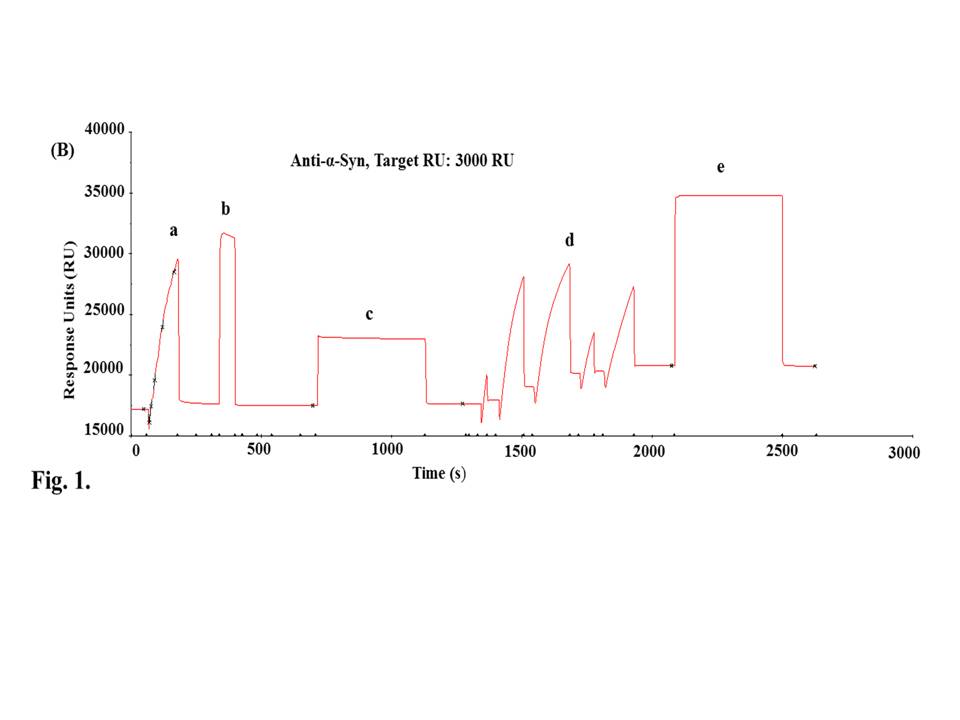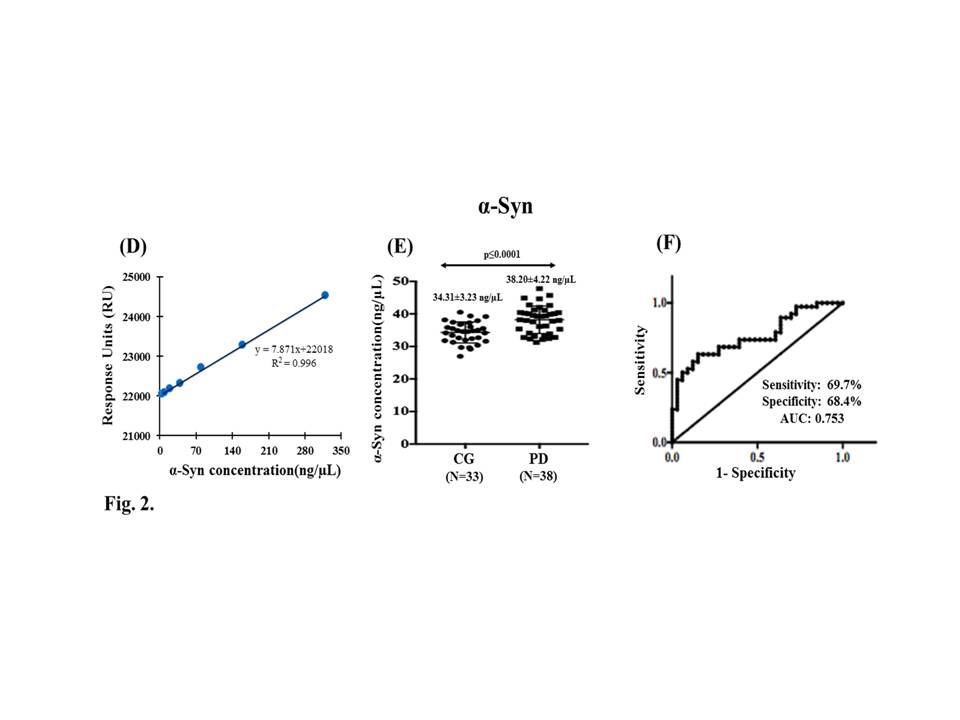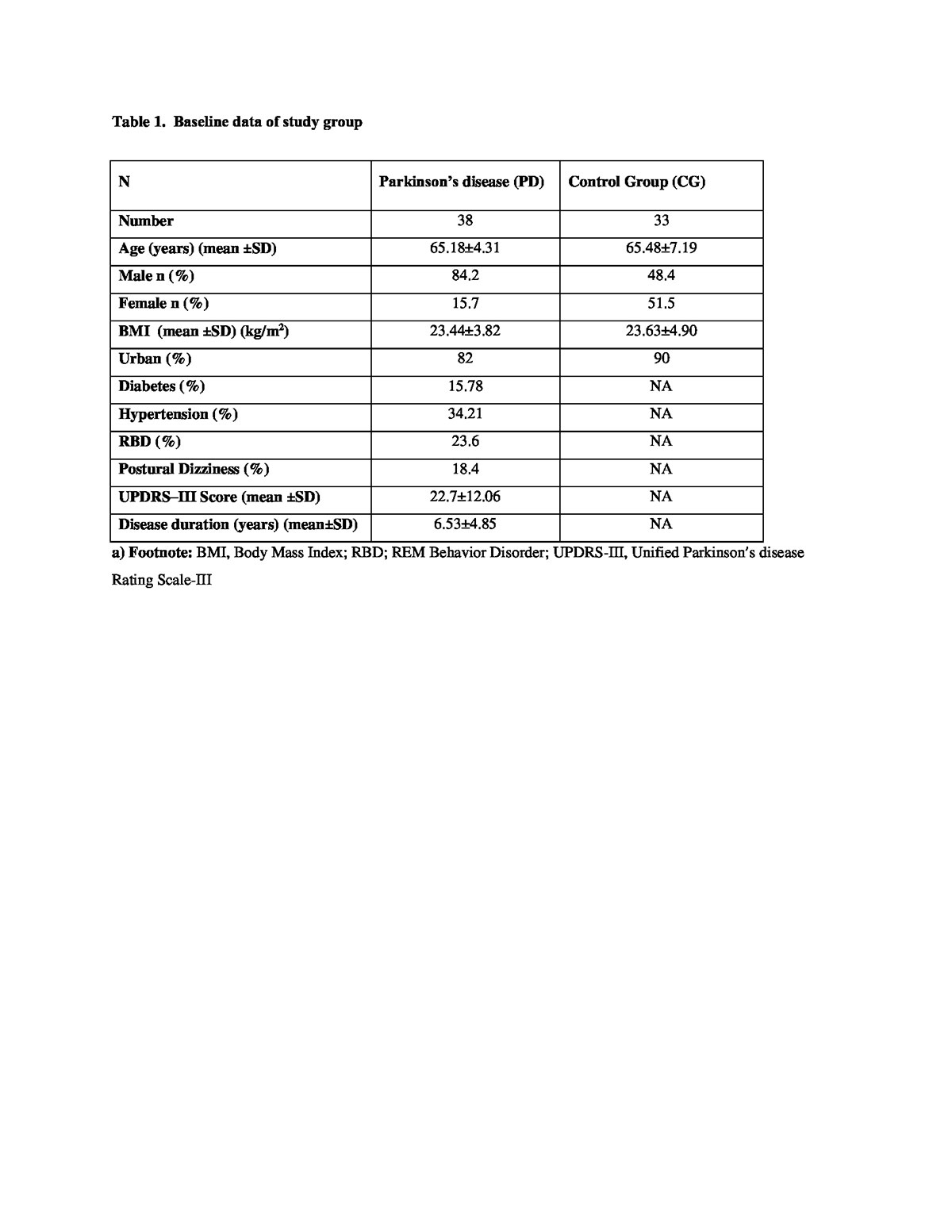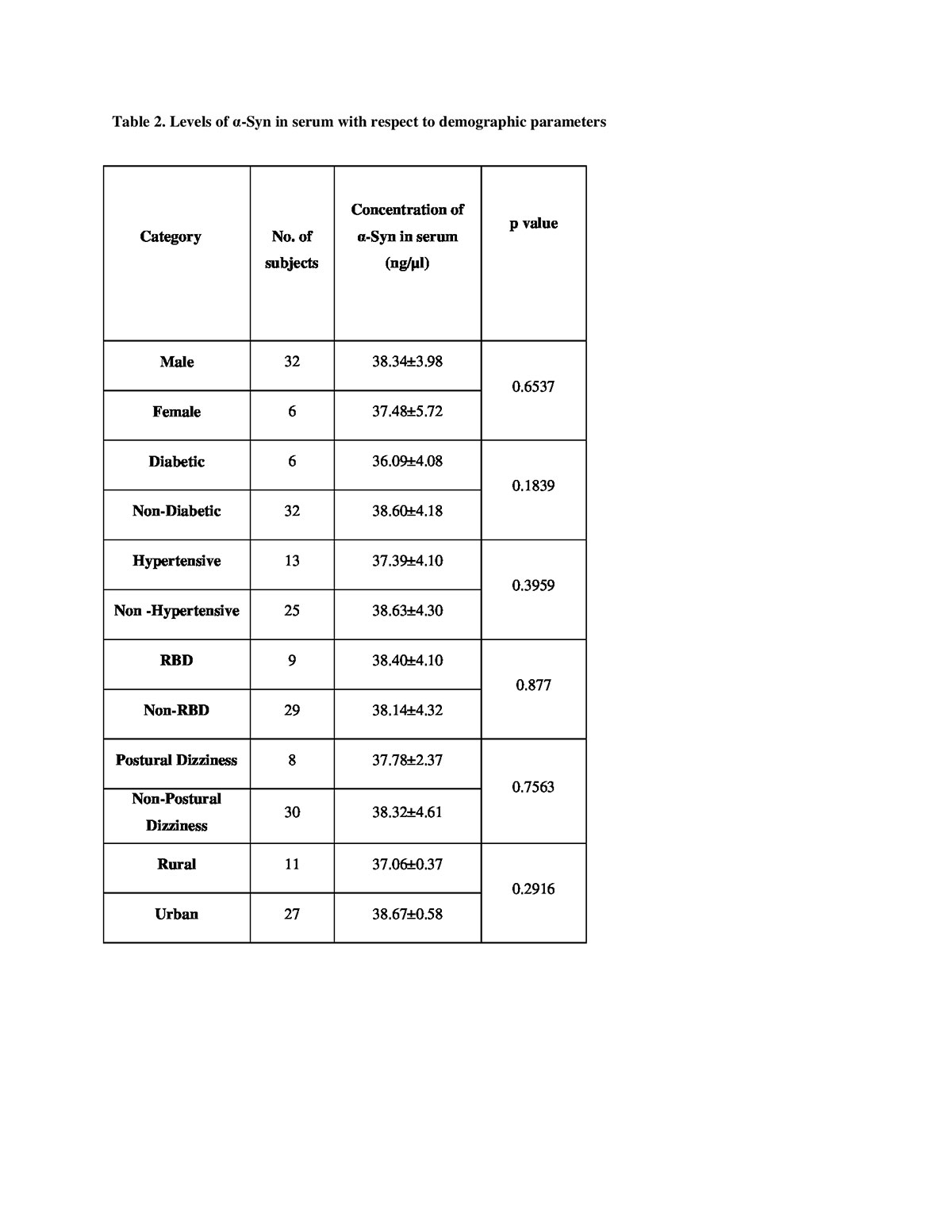Session Information
Date: Tuesday, September 24, 2019
Session Title: Parkinsonisms and Parkinson-Plus
Session Time: 1:45pm-3:15pm
Location: Agora 3 West, Level 3
Objective: α-synuclein (α-Syn) is a presynaptic protein whose overexpression or misfolding contributes to the pathophysiology of Parkinson’s disease (PD). This study aims to estimate the α-Syn levels concentration in serum by real time, label free Surface Plasmon Resonance (SPR) technique which is well established technique for biomarker discovery in pico molar range.
Background: In India 7 million people are affected with PD. The WHO estimated the prevalence of PD in India is 160 per 1000,000. Oligomeric α-syn is the pathologic hall mark of PD. α-Syn levels can be potential clinical protein marker for PD, but several studies have reported different results. Analysing the body fluids (e.g. blood, urine, saliva, tear etc.) proteome is the promising approach to identify protein marker for diseases. Circulatory proteins reflects human physiological or pathological condition. Blood based biomarker is noninvasive technique, more helpful for screening large population and helpful for elderly patients.
Method: The concentration of α-Syn in serum samples of 38 PD patients and 33 control group (CG) individuals were quantified by surface plasmon resonance (SPR). The study was approved by AIIMS, New Delhi Ethics Committee (IESC/iT-461/30.9.2015) and written consent was obtained from subjects. The receiver operating characteristic curves(ROC) was plotted to evaluate it as circulating blood based protein biomarker. The sensitivity, specificity and area under curve (AUC) obtained from ROC curve analysis disclosed the accuracy to differentiate PD from GCl in respect to serum α-Syn levels.
Results: α-Syn level was significantly (p≤0.0001) higher in PD patients (38.20±4.22ng/µL) than CG (34.31±3.23 ng/µL). AUC for α-Syn were found to be 0.753. Cut-off value of ≥35.94 ng/µL for α-Syn resulted in sensitivity of 69.7% and a specificity of 68.6% for PD diagnosis. The correlation of serum α-Synuclein with duration of disease, age, BMI andUPDRS-III was evaluated. The levels of α-Syn increases with progressive UPDRS-III score.Furthermore, there was no signifcant correlation of α-Syn levels were detected with various d covariates in PD. [table1]; [table2]; [figure1]; [figure2]
Conclusion: It can be summarized from our report that α-Syn can be one of the potential diagnostic protein markers for PD and differentiate it from elderly controls in Indian population by SPR.
To cite this abstract in AMA style:
A. Singh, T. Bajaj, A. Dey, S. Dey. Serological analysis of circulating Alpha Synuclein protein levels by Surface Plasmon Resonance (SPR) In Parkinson’s disease [abstract]. Mov Disord. 2019; 34 (suppl 2). https://www.mdsabstracts.org/abstract/serological-analysis-of-circulating-alpha-synuclein-protein-levels-by-surface-plasmon-resonance-spr-in-parkinsons-disease/. Accessed December 10, 2025.« Back to 2019 International Congress
MDS Abstracts - https://www.mdsabstracts.org/abstract/serological-analysis-of-circulating-alpha-synuclein-protein-levels-by-surface-plasmon-resonance-spr-in-parkinsons-disease/




